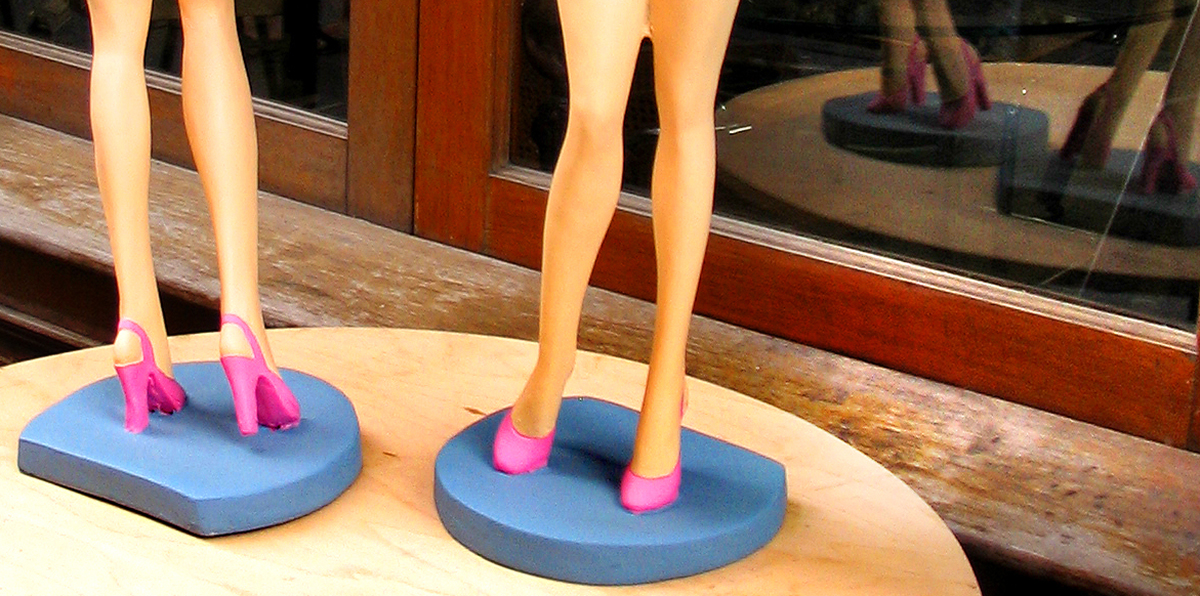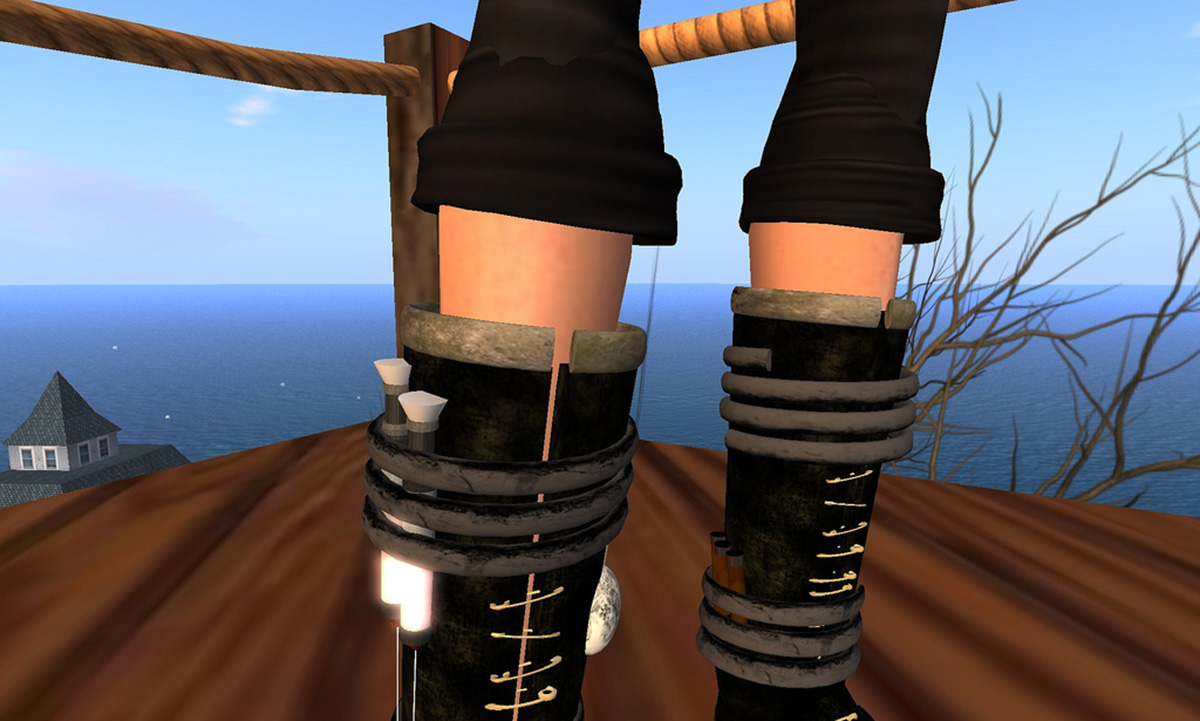The British newspaper The Daily Mail reports the story of Hajnal Ban, a then-29 year-old Israeli-born Australian barrister and politician who finally decided she had had enough teasing about her height, 5'0" (132 cm) in 2002. She made the trip from Australia to Kurgan, a city in southeastern Russia on the Trans-Siberian Railway on the frontier with Kazakhstan, to have excruciatingly painful leg surgery to make her 3" (a little under 8 cm) taller.
The Daily Mail also reports the story of Peter Croft, a then-33 year-old information technology consultant who made the trip from the UK to the same town in Russia after researching his options for lengthening one of his legs for two years. Croft had been born with one leg that was 2 inches (5 cm) shorter than the other.

Both of these intrepid seekers of normal height and over 100,000 other people have traveled to Russia to be fitted with a device known as the Ilizarov frame, which in some cases has increased a user's height as much as a foot (25 cm).
Dr. Ilizarov and His Frame
Gavriil Ilizarov was born into a poor peasant family on a farm near Białowieża, Poland in 1921. Shortly after he was born, his parents fled to Azerbaijan, where he grew up. Ilizarov completed a course of study in a "rabfak," an institution designed to prepare workers for higher education, and was admitted to a medical school. During World War II, he was evacuated to Kazakhstan, and in the 1950's he became Chief of the Department of Trauma and Orthopedics at a veteran's hospital in the Siberian town of Kurgan.
In treating difficult cases, Ilizarov noticed that sometimes when it was not possible to set a fracture, the two ends of the bone left separated would eventually grow to join each other. Ilizarov reasoned that when bones were deformed or too short, if might be possible to intentionally break them into two segments and to gradually move them as they grew back together so that the bone would lengthen. The procedure came to be known as "distraction" osteogenesis; in this case, "distraction" means the "opposite of traction," not that the bones are somehow fooled into growing longer.
To hold the bones just the right distance apart as they grew toward each other so that the final bone would be longer, Ilizarov invented a frame using circular rings that allowed growth of the soft tissue. Other surgeons in the United States had worked on the problem for many years, but it was Ilizarov's device that allowed for soft tissue growth to support the growth of bone.
READ A Successful, World's-First Double Leg Transplant
The Key to Successful Distraction Osteogenesis
Ilizarov and other physicians recognized early on that the key to successful treatment was to make sure the two ends of the bone were separated at just the right rate. Bones knit together over a fracture, but if the gap between the two ends is too long, they grown fibrous tissue rather than bone. If the gap between the two ends is too narrow, then the result can be malformed bone. Distraction osteogenesis is not a process that can be rushed. While a small fracture might heal in a few weeks, adding 5 inches to the length of a bone takes most of a year.
An Internationally Accepted Method of Leg-Lengthening Surgery
For nearly 20 years, Ilizarov was called a quack by other Soviet doctors. It was not until 1968 that Valerii Brumeii, who had won an Olympic gold medal for the Soviet Union for the high jump, came to Kurgan for treatment, three years after injuring his leg in an auto accident. Before seeing Ilizarov, the Olympic gold medalist had perservered through 32 unsuccessful surgeries. After a year at Kurgan's clinic, however, his leg was restored.
In the 1970's, Ilizarov's method became known in East Germany. In 1980, an Italian photojournalist who had been injured skiing ten years earlier went to Kurgan for treatment, and spread news of the success in the West. The method was brought to the United States in the 1980's, and it even became required learning for orthopedists in the European Union.

If you have one leg that is shorter than the other, or you are very dissatisfied about your height, or you had a bone set improperly and you need to have it repaired, should you find an orthopedist who will treat you with an Ilizarov fixator? The final decision is between you and your doctor, but these facts may aid your discussion:
- Appropriately applied, the Ilizarov fixator is nearly always successful. In the United States, the technique is well accepted and insurance pays for it.
- The surgery required in this surgery is a corticotomy. It cuts the bone but leaves blood vessels, tendons, and soft tissues intact.
- The reason a ring device is needed, rather than a brace, is that a brace stabilizes the bone in two dimensions but a ring stabilizes it in three.
- The bone is broken and then debrided during surgery. Debridement removes tiny bits of bone and tissue that could be infected inside the body.
- The bones are separated at a rate of 1 mm a day. Ilizarov found that moving the bones 0.5 mm a day resulted in formation of deformed bone tissue, and moving the bones 2 mm a day resulted in the formation of fibrous tissue rather than bone.
READ Nutrients You Shouldn't Skip If You Want Strong Teeth And Bones
- The Ilizarov frame moves very, very slowly all day long for constant growth.
- The Ilizarov method can be used with children over five years old, teenagers, and adults.
- Usually, a bone is not lengthened by more that 20 percent of its original length in any single set of treatments. Bones can be lengthened by up to 40 percent, but over the course of several years.
- In adults, the frame is left in place for two months for every 1 cm of lengthening. Lengthening a bone by 5 cm (2 inches ) takes five months.
- Modern experience has reduced the healing time to just five to nine months in most cases.
- Nearly everyone who receives the device will develop an infection where the pin that holds the bone place, connecting it to the ring in the device, pierces the skin. This is almost always treatable with oral antibiotics. Usually the infection is Staphylococcus aureus that normally lives on the skin that is transferred into the skin by the procedure.
READ Warning: Waxing Can Be Dangerous (But Here's How To Avoid A 'Killer' Leg Or Brazilian Wax)
The greatest expertise for this surgery is at the Russian Ilizarov Scientific Center for Restorative Traumatology and Orthopaedics in Kurgan, which has the capacity to treat up to 1,000 patients at a time. However, doctors have been trained in the technique in countries all over the world, and there is likely to be an orthopedist with experience in the method near you.
- Ilizarov GA: The tension-stress effect on the genesis and growth of tissues: Part I. The influence of stability of fixation and soft tissues preservation. Clin Orthop 238:249-281, 1989.
- Ilizarov GA: The tension-stress effect on the genesis and growth of tissues: Part II. The influence of the rate of frequency of distraction. Clin Orthop 239:263-285, 1989.
- Photo courtesy of dsasso: www.flickr.com/photos/dsasso/36379766/
- Photo courtesy of isfullofcrap: www.flickr.com/photos/isfullofcrap/4042286113/
- Photo courtesy of dsasso: www.flickr.com/photos/dsasso/36379766/


Your thoughts on this